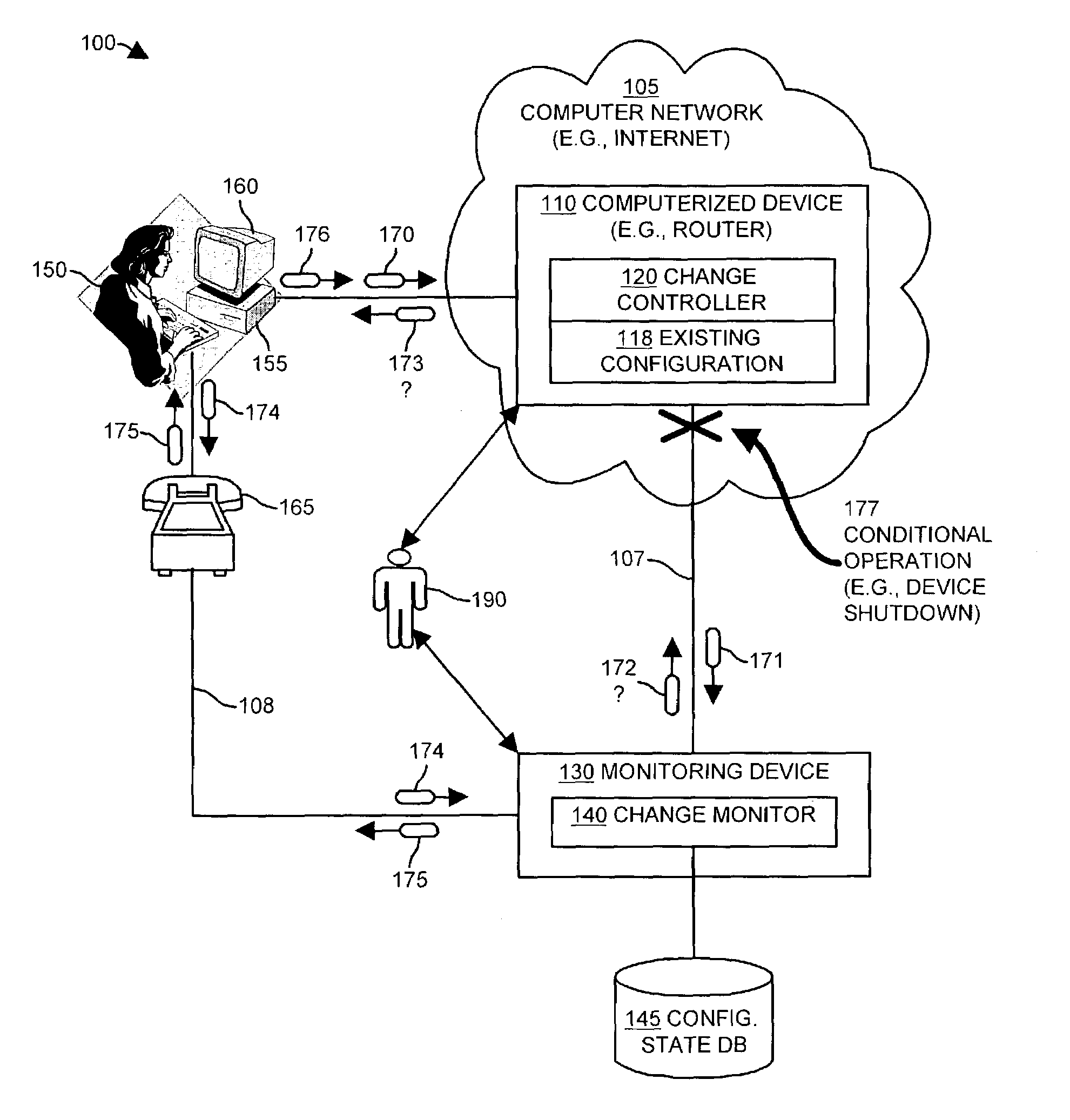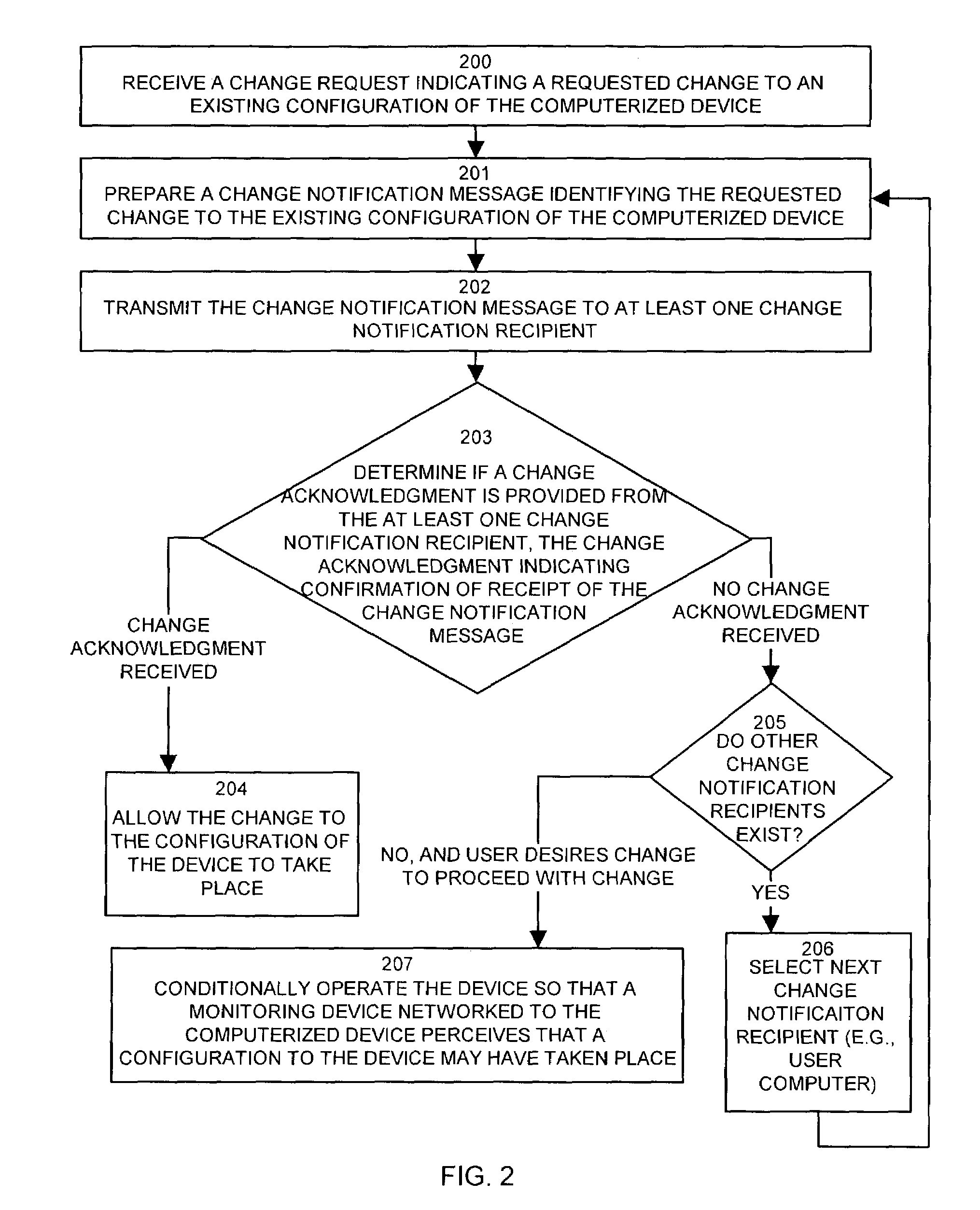Methods and apparatus for auditing and tracking changes to an existing configuration of a computerized device
a computerized device and configuration change technology, applied in the direction of program control, unauthorized memory use protection, instruments, etc., can solve the problems of paralyzing the infrastructure, administrators may not be able to detect the device underwent a configuration change, and the conventional configuration change control and tracking system cannot protect against the threat currently occurring within the computer network
- Summary
- Abstract
- Description
- Claims
- Application Information
AI Technical Summary
Benefits of technology
Problems solved by technology
Method used
Image
Examples
Embodiment Construction
[0037]Embodiments of the invention provide mechanisms and techniques which significantly overcome the aforementioned deficiencies of conventional change management systems used to monitor, detect and control configuration changes made within network accessible computerized devices such as computer systems, data communications devices or the like. Generally, embodiments of the invention limit the potential for a malicious individual or software program (e.g., virus, worm, etc.) to make a change to an existing configuration of a computerized device without notification of the change being provided to or being detectable by a monitoring device such as a remote computer system. Embodiments of the invention operate in such a way that if a malicious attacker (e.g., person or program) attempts to alter an existing configuration of the device using any conventionally known, but unauthorized manner, a monitoring device configured according to embodiments of the invention is capable of detect...
PUM
 Login to View More
Login to View More Abstract
Description
Claims
Application Information
 Login to View More
Login to View More - R&D
- Intellectual Property
- Life Sciences
- Materials
- Tech Scout
- Unparalleled Data Quality
- Higher Quality Content
- 60% Fewer Hallucinations
Browse by: Latest US Patents, China's latest patents, Technical Efficacy Thesaurus, Application Domain, Technology Topic, Popular Technical Reports.
© 2025 PatSnap. All rights reserved.Legal|Privacy policy|Modern Slavery Act Transparency Statement|Sitemap|About US| Contact US: help@patsnap.com



